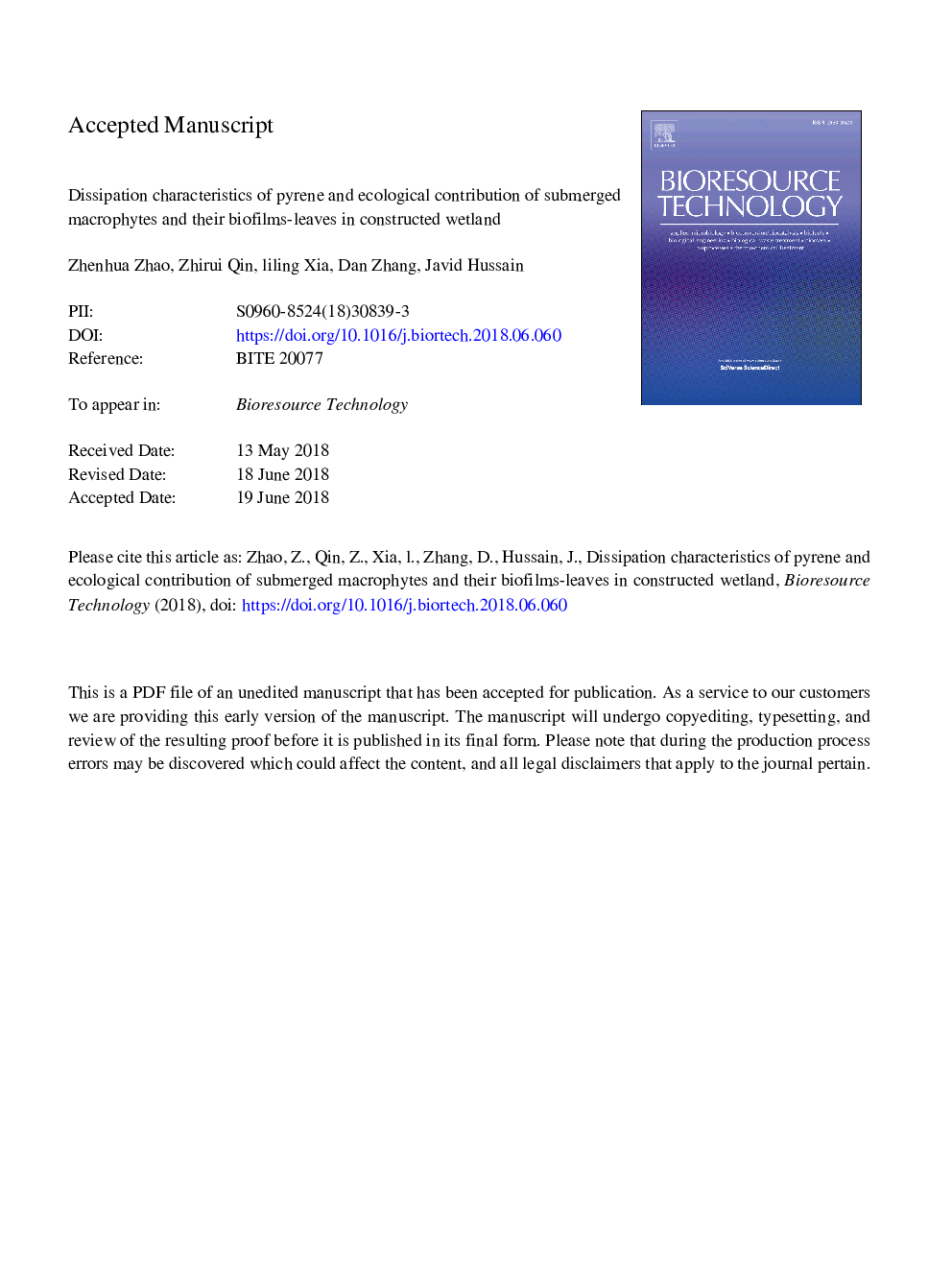| Article ID | Journal | Published Year | Pages | File Type |
|---|---|---|---|---|
| 7065843 | Bioresource Technology | 2018 | 42 Pages |
Abstract
The dissipation characteristics of pyrene and ecological contribution of submerged macrophytes (Vallisneria natans, Hydrilla verticillata and artificial plant) and their biofilms-leaves in constructed wetland system were investigated by high-throughput sequencing. Results showed a non-negligible ecological contribution of submerged macrophytes and their biofilms-leaves in dissipating pyrene in planted sediments (33.25-43.00%) in contrast with unplanted system (23.25-26.50%). Alpha and Beta diversity analysis indicated that bacterial community structures were influenced in order of attached surfaceâ¯>â¯incubation timeâ¯>â¯spiking concentration of pyrene in sediment. Difference analysis suggested that attached surface tended to affect the rare genera up to significant level compared with incubation time. In addition, RDA analysis showed that PAH-degrading bacteria in biofilms-leaves of submerged macrophytes were positively correlated with the dissipation ratios of pyrene. Interestingly, nitrogen transforming microorganisms were also influenced in the presence of pyrene, while submerged macrophytes contributed to alleviate the impact.
Related Topics
Physical Sciences and Engineering
Chemical Engineering
Process Chemistry and Technology
Authors
Zhenhua Zhao, Zhirui Qin, liling Xia, Dan Zhang, Javid Hussain,
